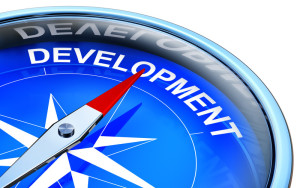I am passionate about developing the next generation of leaders, in particular helping to develop women leaders in health IT. I have joined with Gale Thompson, a renowned leadership coach, to offer a new  service through StarBridge Advisors called C-change. Our goal is to equip female leaders in health IT with the perspectives, knowledge, skills and support to be an effective leader – her way.
service through StarBridge Advisors called C-change. Our goal is to equip female leaders in health IT with the perspectives, knowledge, skills and support to be an effective leader – her way.
Why are we doing this? We see a world in which female IT professionals hold up half the world in healthcare at all levels. They are seen, supported, and expected to be leaders. They are equally as successful and effective as their male colleagues and enabled to be leaders each in their own unique way, drawing on their strengths, values, and personal qualities. They can effectively bring to leadership both their head and heart.
We want to support the development of female leaders at all stages of their career such that they enter, evolve, and attain leadership positions at a rate equal to their male peers and in a way that fully utilizes their strengths.
To start with, C-change will offer two unique online courses beginning in March:
Preparing Emerging Leaders for Success
This course is aimed at women early in their health IT career who are looking to develop their leadership skills. I will conduct a 6-month online series of participative group webinars for aspiring women leaders. Each series will be limited to 20 participants and include 6 one-hour monthly sessions, each with a presentation and small group breakouts for discussion on the following topics:
Building Confidence – Developing Your Inner Strength and Voice
Finding Your Passion – How to Know When to Make a Move
Negotiating for Success – Negotiation Skills and Crucial Conversations
Building Your Network and Personal Brand – Leveraging Social Media
Making the Right Choices for You – Life/Work Balance
Through this custom-tailored series, you will gain valuable insight and make lasting connections with other aspiring women leaders. Continue reading →
 come in all sizes.
come in all sizes.








